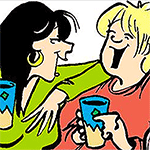Top 9 Signs That You Have a Sick Tree and How to Prevent It
Published in Home Articles
Is your tree looking unhealthy? Spotting the signs of a sick tree early can save it from serious damage. From dropping leaves to strange spots, a sick tree often shows clear warning signs.
Knowing what to look for helps you act fast and protect your yard’s beauty. In this guide, we’ll share the top 9 signs of tree sickness and offer simple tips to prevent issues. With a little care, you can keep your trees healthy, strong, and thriving year-round. Read on and learn more.
1. Dead or Falling Branches
If you notice dead or falling branches, it might be a sign of a sick tree. Dead branches often signal decay or damage inside the tree, which weakens its structure. A tree with many dead branches may also become a hazard, especially during storms.
Removing dead branches can help prevent further damage to your tree. Regularly inspect your tree for branches that look dry, brittle, or cracked. This simple habit is a key step in healthy tree maintenance and keeps your tree strong.
2. Discolored or Wilting Leaves
Healthy leaves are a sign of a thriving tree, so look out for leaves that are yellow, brown, or wilted out of season. Discolored or wilting leaves can indicate disease, poor nutrients, or water stress. This symptom is particularly important to spot in the growing season when leaves should be green and full.
One way to address discolored leaves is by checking the soil’s moisture and nutrient levels. Water the tree if the soil is dry or add organic compost for a nutrient boost. Proper leaf care is part of overall tree illness prevention.
3. Bark Peeling
Peeling or flaking bark can indicate poor tree health. This phenomenon usually means the tree is under stress or struggling with a severe disease. It could also impede the tree’s ability to transport nutrients and water effectively.
If you notice significant peeling, take action quickly to improve the tree’s condition. Applying tree care techniques and ensuring proper watering can often reverse some effects. Regular maintenance is crucial for keeping trees healthy and preventing wider issues.
4. Fungal Growth on Bark or Roots
Fungi, like mushrooms, on a tree’s bark or roots are usually a sign of decay. Fungi feed on dead organic material, indicating that part of your tree might be rotting. While not all fungi are harmful, it’s worth investigating to protect the tree’s health.
Avoid overwatering, as excess moisture promotes fungal growth. You may also want to contact tree trimming and pruning services to remove infected areas. These services can help with early detection and removal of any affected wood to save the tree.
5. Cracks or Splits in the Trunk
Cracks or splits in the tree’s trunk are serious signs of potential disease or injury. These cracks can open up pathways for pests and diseases to enter the tree, weakening its structure. In severe cases, they can even cause the tree to break or fall.
Regularly inspect your tree’s trunk for any cracks or splits, and treat them as soon as possible. Applying a tree sealant can protect the damaged area from infections and pests. Caring for trunk injuries is a key part of tree care tips and maintenance. If there’s significant damage, it may be wise to consult a tree care expert.
6. Weak or Sparse Canopy
A healthy tree has a full, dense canopy, so if your tree looks thin or sparse, it may be unwell. A weak canopy may mean the tree isn’t getting enough nutrients or is suffering from disease. This can also make the tree less able to withstand harsh weather.
By closely monitoring your trees, you can catch the symptoms early. Consider fertilizing your tree to give it a nutrient boost and support canopy growth. Pruning can also encourage new growth, giving your tree a fuller appearance. Healthy tree maintenance includes regular canopy checks to catch any thinning early on.
7. Pest Infestations
Bugs are part of nature, but an excessive amount can harm your tree. Pests like beetles, caterpillars, or aphids may bore into branches, eat leaves, and spread disease. Infestations can leave your tree vulnerable to more severe health problems.
Inspect your tree regularly for signs of pests, such as small holes, chewed leaves, or webs. Using safe pest control options, like neem oil or insecticidal soap, can reduce pest issues. These gardening tips for trees can help keep infestations at bay. Also, staying vigilant can ensure that pests are addressed before they can further harm your tree.
8. Oozing Sap or Sticky Buildup
Excess sap or sticky substances around the trunk or branches could signal a problem. When a tree produces too much sap, it’s often a response to injury, disease, or pests. This can make the tree more attractive to bugs, further stressing its health.
Trim any damaged branches to encourage the tree to heal. Applying a mild insect repellent can also keep bugs away from the sap. Oozing sap can be an early warning sign, so catching it quickly aids in effective tree illness prevention.
9. Root Damage or Unstable Base
Roots anchor the tree and provide it with water and nutrients. If the roots are damaged, the tree may become unstable, lean, or struggle to grow. Root damage can be caused by soil compaction, construction, or improper planting.
To protect the roots, avoid heavy traffic or construction around the tree’s base. Watering deeply also encourages the roots to grow strong and deep. Adding healthy soil or mulch can also help support root health. Proper root care is essential to prevent tree disease and keep the tree healthy for years.
Protect Your Landscape by Recognizing a Sick Tree
Taking action early can make all the difference for a sick tree. By learning the signs and giving proper care, you help trees stay strong and beautiful. Regular checks and small fixes prevent bigger problems down the line. Healthy trees add life to your yard and home.
Don’t ignore changes like dead branches or unusual leaf colors. With a little effort, you can protect your trees and enjoy a thriving landscape for years to come.
Did you find this article helpful? Visit more of our blogs.





























Comments